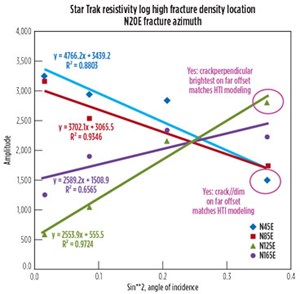What’s new in exploration
A variety of factors, depending on the timing, can make a significant difference in the eventual outcome of various concepts and projects.
Market: In 1981–1983, I owned part of a drilling company called Stellar Energy, operating out of Casper, Wyo. We built the first modular, winterized high-tower land rig at Cameron in Houston. Oil in 1981 was averaging $35/bbl [R, real; inflation adj. $99].
Judgment: Built a couple more units, Rigs # 4280 and # 4281, in 1982. Then there was the great “pause” of 1983, Oil, R $29. Today’s U.S. land rig count is about 988.
Fortune, like a Chinese proverb: Good. Amoco bought Stellar to finish a winter drilling program in the Williston basin. I took a job in Ponca City, Okla. Bad. DuPont bought us. Good. I was rescued by Marathon. Bad. USX showed up and spent the exploration budget.
Government overreach: League of Conservation Voters (LCV) v. Trump, 17-cv-000101, U.S. District Court, District of Alaska (Fairbanks). LCV [a 501(c)(4)] is an environmental derivative of the Sierra Club and Friends of the Earth. It operates a PAC and a super Pac. In a one-stop court action, U.S. District Judge Sharon Gleason prevented the U.S. Executive Branch and 328 million citizens from merely looking at a large portion of Arctic and Atlantic offshore for O&G exploration. Can’t have production, if you are not allowed to look! Process matters.
Governmental energy policy: Contrast Haiti vs. the Dominican Republic.

Public opinion misconceptions: #1, Water to gasoline exists. #2, Global warming is a reason to not have children. #3, Green is not political. #4, Energy is not political. #5, Recent CO2 measured at the top of a volcano in Hawaii is evidence of melting Arctic ice.
Money/capital: Self-explanatory.
Unknown technology advances. Last month, I stated, “we care now” about what happens on each existing seismic offset trace more than we did. Processing seismic offset traces into sub-angle groups by offset, angle or azimuth combinations is not new. Offset combinations can be very useful in interpretation and as a processing QC tool. Some seismic “anomalies” are not mistakes, but rather are attributed to rock parameters, fluid parameters and/or directionality. The more we use vectors, the more conjecture is resolved. Each data set we look at is a mere snapshot of conditions in time, combined with the theory used in data assembly and reduction. Seismic over time [4D] still has difficulty discerning permeability from hydraulic conductivity.
Dr. Heloise Lynn and I disagree on horses, and how to display shear wave data. We do agree on music, and that acoustic effects in the seismic method are many, variant, and warrant much more study. A recent GSH presentation by Lynn and Goodway1 builds on the knowledge base of Hilterman, and hopefully challenges more investigation into creating sub-macro tools for improved rock physics, Fig. 1.
Here’s an excerpt from the paper’s abstract and conclusion: “The effect of porosity upon P-P Intercept-Gradient (I, G) plots is well-known, when lithology and pore fluid are held fixed (Hilterman, 2018). Expansion of this knowledge into the azimuthal world enables the comprehension of the effects of effective porosity sensed, as source-receiver (S-R) azimuth varies. The azimuthal variations of near-angle amplitudes are the result of the effective porosity sensed changing by azimuth. Alternatively, or additionally, there may be an azimuthal Q effect, due to fluid movement between macroscopic fractures and matrix porosity; or an azimuthal scattering effect. In azimuthal amplitude analysis, the VP, VS, and density can change by azimuth, and this needs to be allowed in the analysis codes”
Note that there are several amplitudes for any one x value, therefore amplitude, alone, cannot be distinguishing enough. While encouraged by this significant advance in interpretation, one can deduce that unique solutions still do not exist in seismic remote sensing methodology. That’s why we call it “interpretation.”
REFERENCE
- Lynn, H., and Bill G., “Effective Porosity Sensed Changing by Azimuth: A Linear Crossplot of Azimuthal P-P,” GSH Journal, Geophysical Society of Houston, May 2019, Vol. 9, No.9, pp 17–24.

- What's new in exploration (November 2023)
- Management issues- Dallas Fed: Activity sees modest growth; outlook improves, but cost increases continue (October 2023)
- What's new in exploration (March 2023)
- The last barrel (January 2023)
- What's new in exploration (January 2023)
- Nova Scotia’s re-starting of exploration is a solid move, says exploration expert (January 2023)
- Applying ultra-deep LWD resistivity technology successfully in a SAGD operation (May 2019)
- Adoption of wireless intelligent completions advances (May 2019)
- Majors double down as takeaway crunch eases (April 2019)
- What’s new in well logging and formation evaluation (April 2019)
- Qualification of a 20,000-psi subsea BOP: A collaborative approach (February 2019)
- ConocoPhillips’ Greg Leveille sees rapid trajectory of technical advancement continuing (February 2019)


